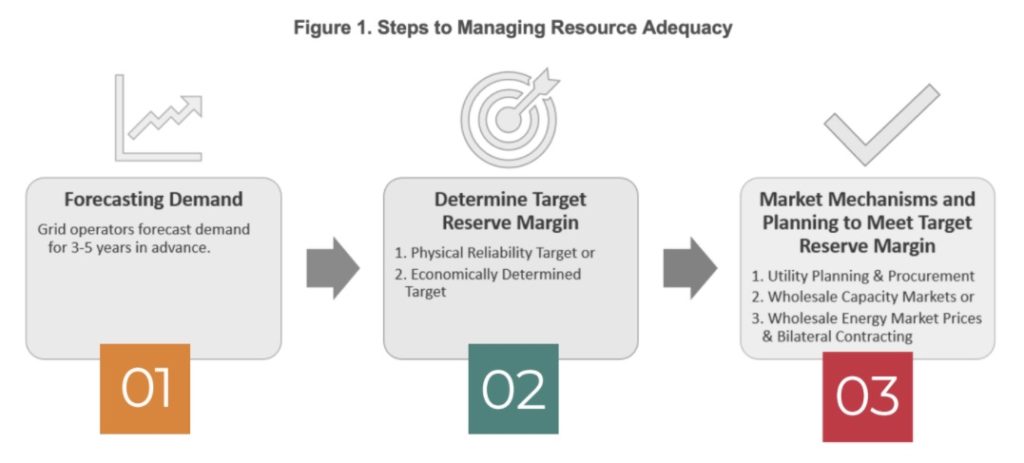Approaches to Resource Adequacy and How They Impact Energy Customers

Energy customers are increasingly interested in resource adequacy because it plays an important role in ensuring grid reliability and impacts clean energy integration. Resource adequacy – or the ability of the electric grid to balance forecasted electricity supply and demand with sufficient energy resources – is critical for making sure the lights stay on. Now more than ever, extreme weather as a result of climate change plays a leading factor in grid interruptions, with weather-related events causing a 67% increase in power outages affecting at least 50,000 customers between 2000 – 2019. Compared to other grid disruptions like cybersecurity and the COVID-19 pandemic, weather-related events caused a record number of end-user disruptions over a five-year average, according to the North American Electric Reliability Corporation (NERC). Reliable electricity is incredibly important to customers as power outages can lead to significant public health and safety risks and economic losses.
Basic Resource Adequacy Planning Steps
At the most basic level, resource adequacy planning requires grid operators to forecast future demand, and then determine the amount of additional generation needed to protect against potential outages, known as a target reserve margin. Grid operators then utilize existing market and regulatory mechanisms to meet the target reserve margin. These steps are illustrated below.

Though resource adequacy is a foundational component for maintaining grid reliability, having an adequate supply of resources to meet demand does not ensure reliable delivery of electricity. As seen in the August 2020 heat wave and February 2021 deep freeze, in addition to accurately forecasting demand, grid reliability can suffer if equipment is not properly weatherized. Inaccurate resource adequacy planning can impair reliability if resources are under-procured, while overprocurement of resources leads to excess costs. Both scenarios can negatively impact energy customers who want to minimize outages while avoiding unnecessary costs.
Market Mechanisms and Planning Approaches
Regional regulatory structures often determine market mechanisms or planning approaches. Grid operators in markets operated by Regional Transmission Organizations (RTO) or Independent System Operators (ISO) either operate capacity markets to incentivize future resources or rely on energy only markets with bilateral contracting to drive investment. A key feature of RTO and ISOs is resource sharing across utilities which reduces costs. In regions without organized wholesale markets, such as the southeast and west, resource adequacy planning responsibility is managed by utilities.
Resource Adequacy and Clean Energy
Resource adequacy approaches matter because they not only impact reliability and cost, but they also affect clean energy integration. Rules or practices that favor certain resource characteristics can advantage fossil fuel resources and limit the participation of wind, solar, and demand response. Finally, overprocurement can crowd out development of clean new resources or mute market signals that would support development of flexible resources to support greater renewables.
What’s next for resource adequacy?
Resource adequacy is a key component to reforming and expanding well-designed and implemented organized wholesale markets to accommodate higher renewable energy penetration while ensuring grid reliability. Resource adequacy and how it evolves is essential to CEBA’s mission of achieving a decarbonized grid at the lowest cost for customers. The Resource Adequacy Primer: General Approaches and Importance to Customers is the first Clean Energy Buyers Institute resource in a new series focused on resource adequacy. The primer highlights the importance of resource adequacy to customers and describes various approaches and their implications on cost and clean energy. Future products will dive deeper into approaches in specific markets and outline proposals to improve resource adequacy planning.
